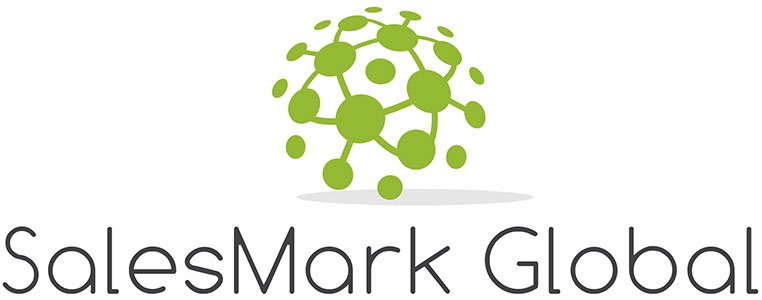How to Align Digital Marketing, Demand Gen, and CX for Maximum Impact in B2B
See how a unified digital marketing, demand gen, and CX strategy—amplified by native advertising—can transform your B2B customer journey.
Table of Contents:
1. Understanding the Core Components: The Three Pillars of B2B Marketing
1.1 Digital Marketing: The Voice of Your Brand
1.2 Demand Generation (Demand Gen): Building the Pipeline
1.3 Customer Experience (CX): Creating Lasting Relationships
2. Native Advertising: The Glue That Holds It All Together
2.1 Why Native Ads are Effective in B2B Marketing
2.2 Choosing the Right Native Ad Platforms
3. Setting Shared Goals: A Unified Marketing Machine
3.1 Common Objectives for Maximum Impact
3.2 The Role of Data in Alignment
4. A Seamless Buyer Journey: Connecting the Dots Across Touchpoints
5. Cross-Functional Collaboration: The Secret Sauce to Success
5.1 Data Sharing and Communication
5.2 A Unified Content Calendar
6. Measuring Success: Proving the ROI of Alignment
Companies are being forced to drive growth and revenue through highly targeted, data-driven marketing strategies. Best practice is no longer doing one area well—digital marketing, demand generation (demand gen), or customer experience (CX)—but all those elements working in harmony together. When these components align, the result is a seamless journey for your customers—one that attracts, nurtures, and retains them over time.
Now, how do you apply these efforts, especially in complex B2B ecosystems? Use alignment of teams, data, and strategy toward common goals, plus tools like native advertising to further amplify every stage of the customer lifecycle.
Let’s get into details on how one can best align digital marketing, demand generation, and CX for that maximum impact in your B2B business.
1. Understanding the Core Components: The Three Pillars of B2B Marketing
Given that it is hard to speak about how these business areas will be aligned without discussing what each does and fits in the larger strategy, let’s first identify what each one does and how they fit into the overall strategy.
1.1 Digital Marketing: The Voice of Your Brand
Digital marketing is the various ways in which you are communicating with both current and potential customers through a digital environment. These include a whole myriad of things, from SEO and social media to e-marketing emails and various others such as content development and native advertising. Awareness and interest are generated. It simply captures attention without being intrusive—that is necessary in B2B—by means of native ads that are so nonintrusive to be almost seamless with editorial content.
1.2 Demand Generation (Demand Gen): Building the Pipeline
Demand generation creates leads and nurtures them. Essentially, the goal is to create interest in your products or services, which can then be used to take that lead further into a sales opportunity. Proper demand generation strategies can allow you to find possible clients, and these targeted campaigns can be nurtured further down the sales funnel. Native advertising platforms fit perfectly into this stage due to their contextual relevance.
1.3 Customer Experience (CX): Creating Lasting Relationships
Customer experience is all about the sum total of what a customer experiences concerning your brand—from first engagement to post-purchase support. In B2B, superior CX usually means repeat business, renewals, and word-of-mouth referrals. And that is why integrating marketing and demand generation strategies into CX means your message resonates, and it supports a great experience every step of the way.
2. Native Advertising: The Glue That Holds It All Together
So, where does native advertising fit into all of this digital marketing, demand generation, and CX alignment? Well, suffice it to say: it helps connect the three by delivering a message to the right person at the right time in the right format.
2.1 Why Native Ads are Effective in B2B Marketing
In native advertising, paid media simulates the look, feel, and function of the platform on which it appears. For B2B companies, native content advertising serves as a non-intrusive means of engaging prospects rather than interruptive traditional ads. Native ads provide useful, valuable information in a format that they already enjoy, be it an article, video, or infographic.
For example, a case study that delivers value in a context relevant to you, perhaps on a respected industry publication that features. That neatly aligns with demand generation because it drives traffic to your site while nurturing trust with potential clients.
2.2 Choosing the Right Native Ad Platforms
There are myriad native advertising platforms to choose from. There are the bigger, more popular networks like Taboola and Outbrain, as well as those with industry-specific focuses. The right platform will depend on who you are targeting, what kind of content you will be promoting, and what kind of engagement you want to generate.
3. Setting Shared Goals: A Unified Marketing Machine
In order to synergy those three areas, which are digital marketing, demand generation, and CX, it is very important that all these teams are aligned with their goals.
3.1 Common Objectives for Maximum Impact
Begin with ambitious objectives, like getting more leads, increasing conversion rates, and retaining existing customers. Such goals are supposed to guide campaigns and their associated activities. Align KPIs—CLV, conversion rates, and engagement metrics—across the organization and make people align on similar outcomes.
3.2 The Role of Data in Alignment
Data is your best friend in maintaining this alignment. The understanding from native ads and other digital marketing channels should shape the demand-gen approaches. And the same data can also be used to buttress CX efforts, as every touchpoint will reflect the expectations of your customers.
4. A Seamless Buyer Journey: Connecting the Dots Across Touchpoints
A B2B buying cycle can be long and very complex, comprising several stakeholders and decision-makers. To ensure a seamless experience, streamlined alignment of marketing efforts should reach all touchpoints.
Mapping the B2B Buyer Journey
- Top-of-Funnel (Awareness): Awareness Native marketing catches the attention of the audience by being relevant to one’s interest and challenge, such as in blog posts and sponsored articles and infographics.
- Mid-Funnel (Consideration): Moving into the consideration phase, you can reach out to the prospect using some demand-gen tactics like targeted email campaigns and webinars.
- Bottom-of-Funnel (Decision and Loyalty): CX here plays a significant role in ensuring that your messaging reaches the prospect’s buying intent and the post-purchase experience is seamless.
You create frictionless experiences, keeping prospects engaged and progressing toward a sale by ensuring the messaging, at all these stages, is maintained with consistency.
5. Cross-Functional Collaboration: The Secret Sauce to Success
When the digital marketing, demand generation, and CX teams operate fluidly together, their collaborations create more effective services across the board.
5.1 Data Sharing and Communication
Helping alignment might come in the form of working teams, and data being shared can come about through synchronization within CRM systems, utilizing marketing automation tools, or just native advertising platforms able to show content performance insight. Everyone is likely on the same page when everyone understands what is being conveyed to who and when.
5.2 A Unified Content Calendar
One of the easiest ways to ensure that groups are always in alignment is a shared content calendar: avoid overlap; ensure that messaging is consistent and not mixed and matched across various channels; improve tracking of performance metrics; and better allocate resources.
6. Measuring Success: Proving the ROI of Alignment
Measuring whether your alignment efforts are working is useful; therefore, track short-term as well as long-term metrics.
Key Metrics for Measuring Impact
Monitor click-through rates, conversion rates, and engagement metrics for your native ads. Monitor similar demand-gen outcomes such as lead quality and pipeline velocity. From a CX standpoint, track customer retention and satisfaction scores for long-term success.
Another powerful tool in measuring the effectiveness of every channel in the strategy is attribution modeling. With this, you would optimize and assure that you continue to sustain success.
Align for Growth
It’s not just a good idea; it’s essential for driving sustained growth in today’s competitive B2B landscape that demand generation and CX alignment will drive leads from awareness to loyalty. Implementing strategy-enablers like native advertising while keeping common goals and metrics will create the unifying experience that guides prospects through all stages of awareness.
The bottom line? Stronger connections, better conversion rates, and higher brand awareness. Need to crank up your marketing? Try native advertising and take it from there.











